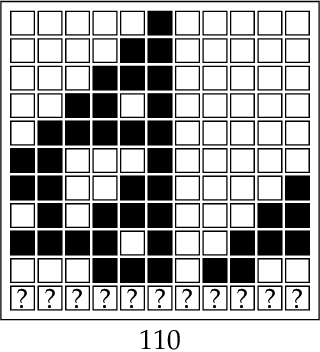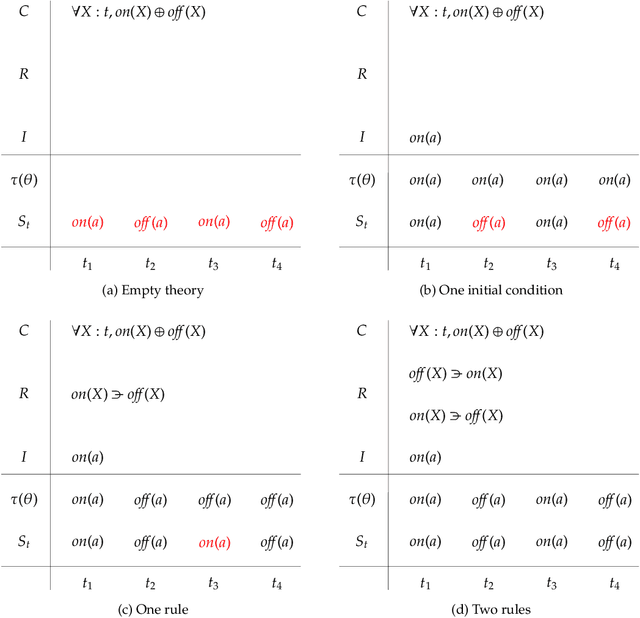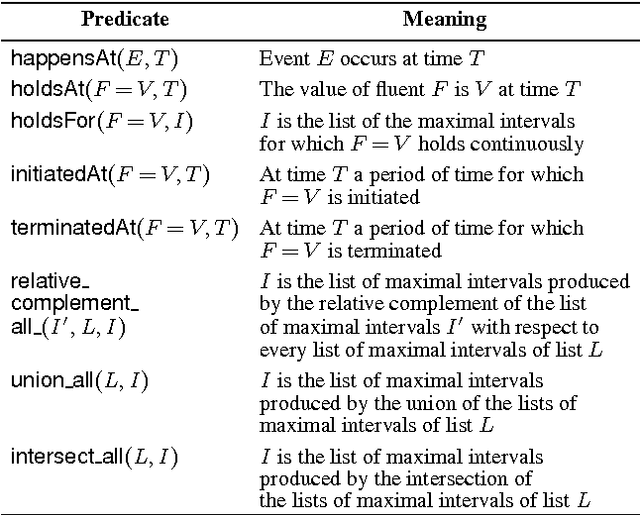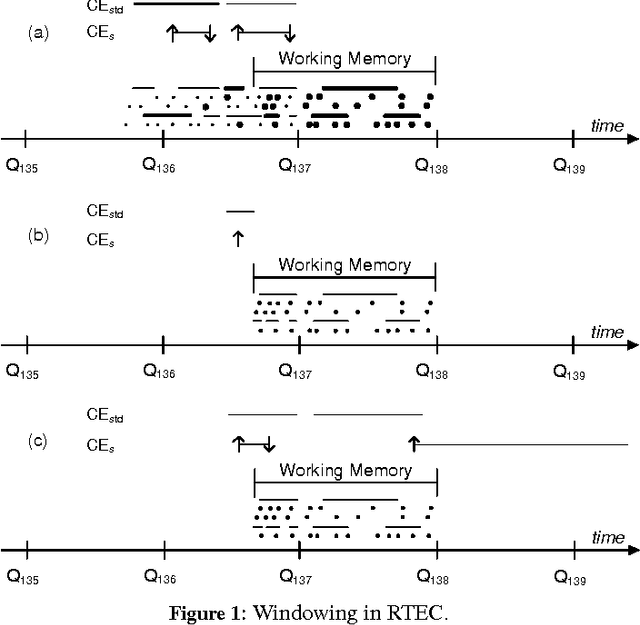Marek Sergot
Evaluating the Apperception Engine
Jul 09, 2020



Abstract:The Apperception Engine is an unsupervised learning system. Given a sequence of sensory inputs, it constructs a symbolic causal theory that both explains the sensory sequence and also satisfies a set of unity conditions. The unity conditions insist that the constituents of the theory - objects, properties, and laws - must be integrated into a coherent whole. Once a theory has been constructed, it can be applied to predict future sensor readings, retrodict earlier readings, or impute missing readings. In this paper, we evaluate the Apperception Engine in a diverse variety of domains, including cellular automata, rhythms and simple nursery tunes, multi-modal binding problems, occlusion tasks, and sequence induction intelligence tests. In each domain, we test our engine's ability to predict future sensor values, retrodict earlier sensor values, and impute missing sensory data. The engine performs well in all these domains, significantly outperforming neural net baselines and state of the art inductive logic programming systems. These results are significant because neural nets typically struggle to solve the binding problem (where information from different modalities must somehow be combined together into different aspects of one unified object) and fail to solve occlusion tasks (in which objects are sometimes visible and sometimes obscured from view). We note in particular that in the sequence induction intelligence tests, our system achieved human-level performance. This is notable because our system is not a bespoke system designed specifically to solve intelligence tests, but a general-purpose system that was designed to make sense of any sensory sequence.
Making sense of sensory input
Oct 05, 2019



Abstract:This paper attempts to answer a central question in unsupervised learning: what does it mean to "make sense" of a sensory sequence? In our formalization, making sense involves constructing a symbolic causal theory that explains the sensory sequence and satisfies a set of unity conditions. This model was inspired by Kant's discussion of the synthetic unity of apperception in the Critique of Pure Reason. On our account, making sense of sensory input is a type of program synthesis, but it is unsupervised program synthesis. Our second contribution is a computer implementation, the Apperception Engine, that was designed to satisfy the above requirements. Our system is able to produce interpretable human-readable causal theories from very small amounts of data, because of the strong inductive bias provided by the Kantian unity constraints. A causal theory produced by our system is able to predict future sensor readings, as well as retrodict earlier readings, and "impute" (fill in the blanks of) missing sensory readings, in any combination. We tested the engine in a diverse variety of domains, including cellular automata, rhythms and simple nursery tunes, multi-modal binding problems, occlusion tasks, and sequence induction IQ tests. In each domain, we test our engine's ability to predict future sensor values, retrodict earlier sensor values, and impute missing sensory data. The Apperception Engine performs well in all these domains, significantly out-performing neural net baselines. We note in particular that in the sequence induction IQ tasks, our system achieved human-level performance. This is notable because our system is not a bespoke system designed specifically to solve IQ tasks, but a general purpose apperception system that was designed to make sense of any sensory sequence.
Reactive Reasoning with the Event Calculus
May 20, 2015


Abstract:Systems for symbolic event recognition accept as input a stream of time-stamped events from sensors and other computational devices, and seek to identify high-level composite events, collections of events that satisfy some pattern. RTEC is an Event Calculus dialect with novel implementation and 'windowing' techniques that allow for efficient event recognition, scalable to large data streams. RTEC can deal with applications where event data arrive with a (variable) delay from, and are revised by, the underlying sources. RTEC can update already recognised events and recognise new events when data arrive with a delay or following data revision. Our evaluation shows that RTEC can support real-time event recognition and is capable of meeting the performance requirements identified in a recent survey of event processing use cases.
A Constraint-Driven System for Contract Assembly
Jun 07, 2001Abstract:We present an approach for modelling the structure and coarse content of legal documents with a view to providing automated support for the drafting of contracts and contract database retrieval. The approach is designed to be applicable where contract drafting is based on model-form contracts or on existing examples of a similar type. The main features of the approach are: (1) the representation addresses the structure and the interrelationships between the constituent parts of contracts, but not the text of the document itself; (2) the representation of documents is separated from the mechanisms that manipulate it; and (3) the drafting process is subject to a collection of explicitly stated constraints that govern the structure of the documents. We describe the representation of document instances and of 'generic documents', which are data structures used to drive the creation of new document instances, and we show extracts from a sample session to illustrate the features of a prototype system implemented in MacProlog.
The Representation of Legal Contracts
Jun 07, 2001Abstract:The paper outlines ongoing research on logic-based tools for the analysis and representation of legal contracts of the kind frequently encountered in large-scale engineering projects and complex, long-term trading agreements. We consider both contract formation and contract performance, in each case identifying the representational issues and the prospects for providing automated support tools.
 Add to Chrome
Add to Chrome Add to Firefox
Add to Firefox Add to Edge
Add to Edge